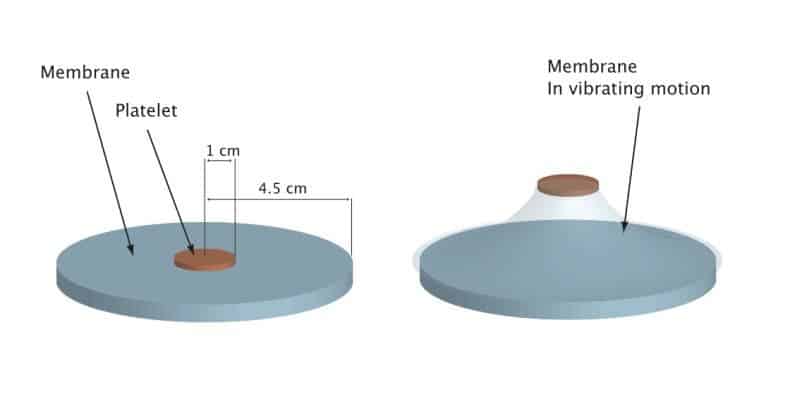
Researchers at the Hong Kong University of Science and Technology have created a thin metamaterial surface that is capable of absorbing nearly all of the acoustic energy (sound). Unlike conventional sound absorbing material that is sometimes only effective when meters thick, the metasurface is deeply “subwavelength” and therefore much thinner. There’s a catch though: the system has been demonstrated for near perfect sound absorption when the system is tuned to a particular frequency.
Silence: an almost perfect sound absorber
Sound absorption materials are usually manufactured with the wavelength of the desired frequency to be absorbed in mind, which for human hearing ranges from 17 meters to 17 millimeters for low to high frequencies respectively. This is why in a studio the mid and high frequencies are easily damped, but you can still hear low frequencies outside.
[SEE ALSO] Intelligent shock absorber dampens vibrations and generates power
The new metamaterial, called a “decorated membrane resonator” (DMR), works different though [cite]doi:10.1038/nmat3994[/cite]. It’s made out of tiny drum membrane embedded in and coupled to a solid support, in the center of which is a platelet. For their demonstration, the researchers used a 9 cm membrane, only 0.2 mm thick, holding a 2 cm platelet in diameter. For the harmonics of the metasurface to correspond to the sound’s wavelengths, the membrane needs to have a very low elastic modulus. A reflecting backing then sandwiches a sealed gas layer.
The metasurface exhibits resonance at audible wavelengths such that there is near total absorption of sound, and dissipation of the energy along the lossy membrane.
The system was shown to have “impedance matching” to the airborne sound waves. This makes the metasurface an excellent energy absorber that doesn’t reflect waves coming from a particular wavelength. This high impedance is powered by the sandwiched gas, as well as the reflective backing surface.
[RELATED] How sound frequencies affects taste
Absorbing sound and generating power at the same time
What’s maybe most striking about the setup is that the vibrations induced in the platelet-membrane system can be coupled to energy generation, with a sound-to-electrical conversion efficiency of 23%. A whole DMR array coupled for various frequencies could then be used to power low-voltage devices, besides dampening sound.
Of course, there’s a catch. The system is tuned to work only for a particular frequency. More than one layer would be needed to catch multiple frequencies or a single layer must contain a number of differently-sized DMRs. Sure, the DMR will prove very useful for applications where a targeted and well-known frequency needs to be absorbed, but the system doesn’t sound that appealing for studios or even highway walls that dampen the noise around residences – it would be too expensive. To set the resonant frequency (the frequency we’re looking to dampen), all you need to do is vary the thickness of the gas layer.






